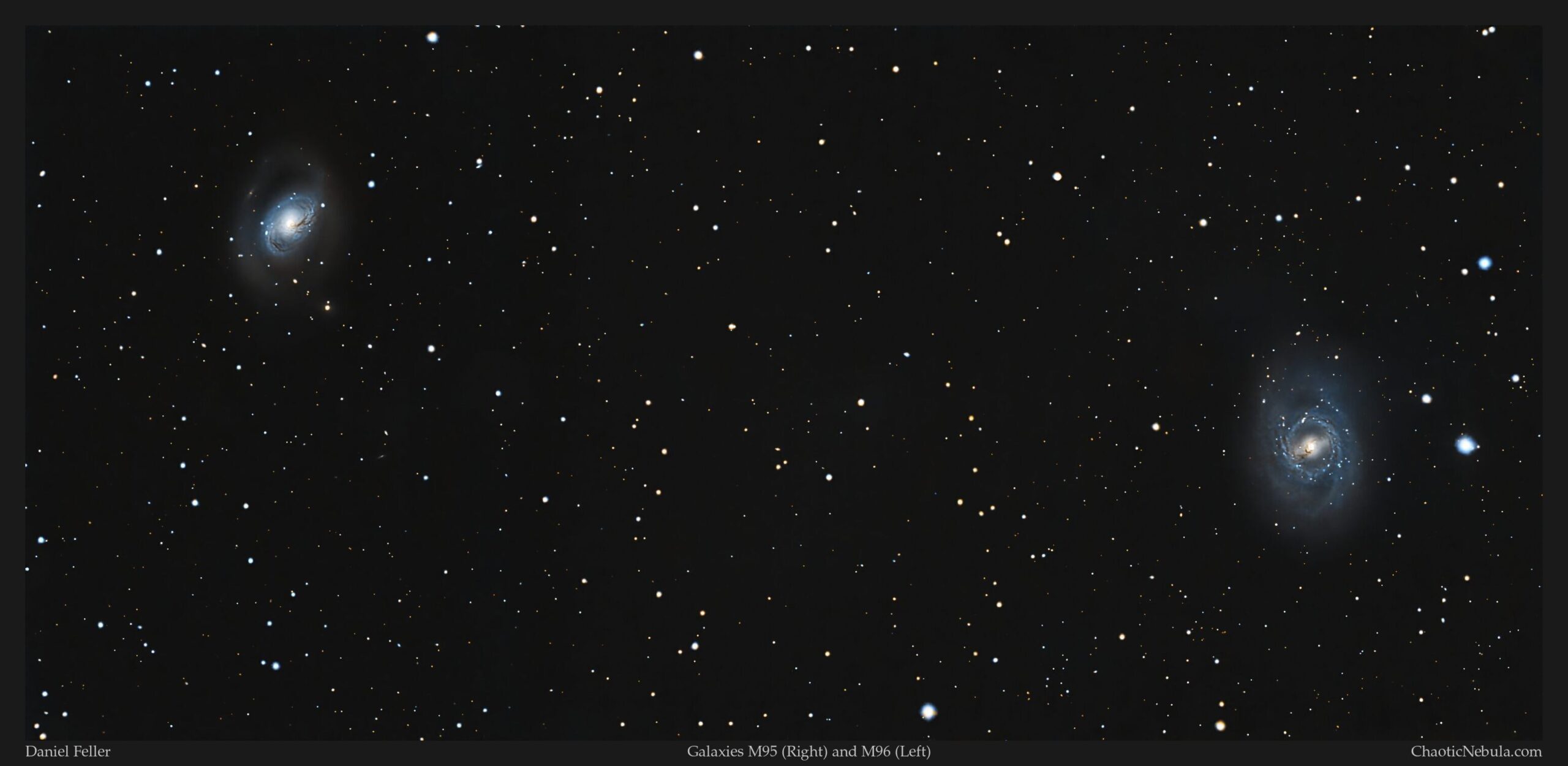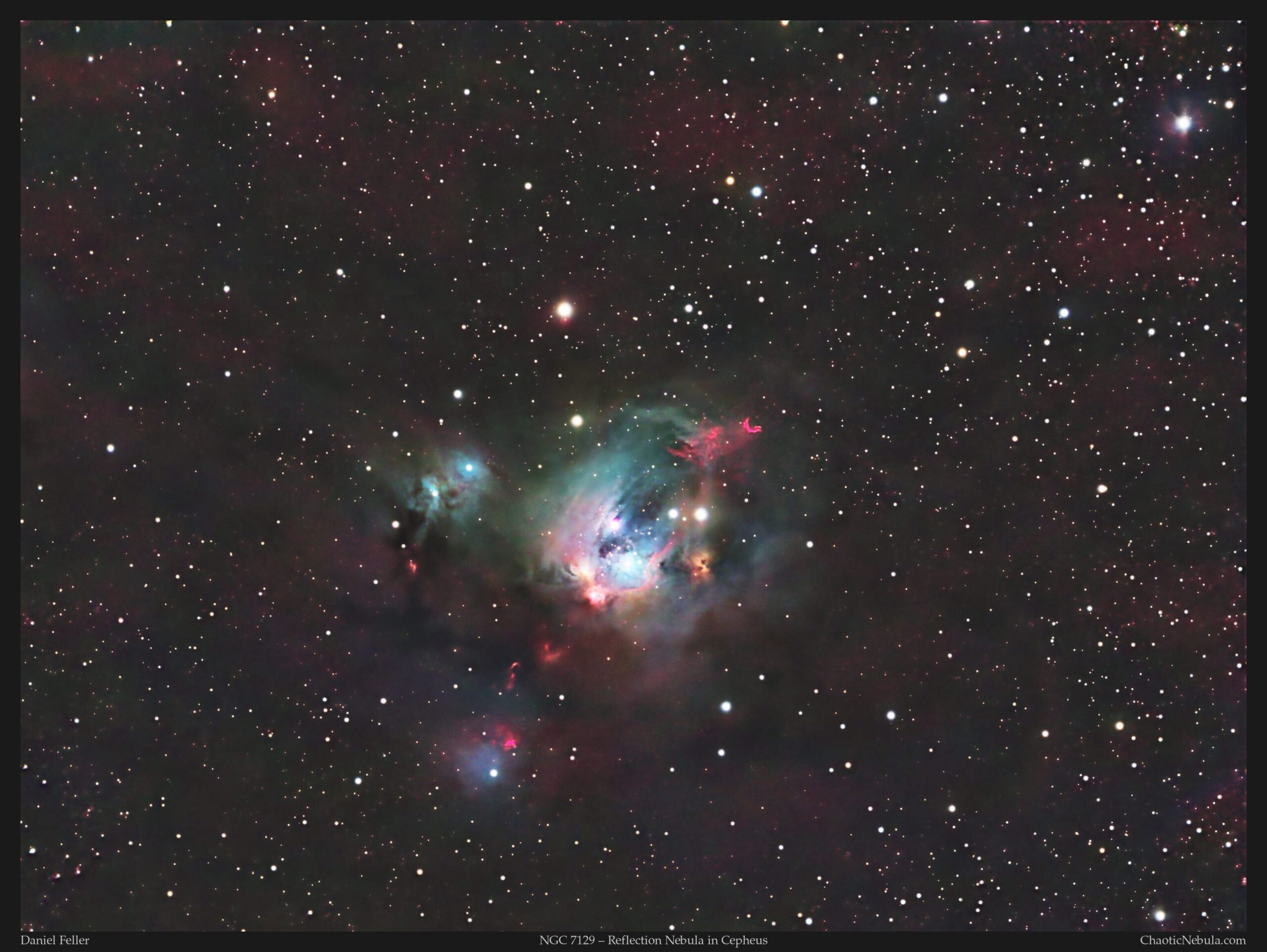Messier 95-96 (M95-M96): Creating a Three Panel Astrophoto Mosaic
Nestled within the constellation Leo (the Lion) lies a bright pair of galaxies: M96 and M95.
Messier 96 (on the left), also known as M96 or NGC 3368, is an intermediate spiral galaxy about 31 million light-years away. It is also about the same size as our own Milky Way galaxy.
Messier 95 (on the right), also known as M95 or NGC 3351, is a barred spiral galaxy (notice the central bar structure) about 33 million light years away.
(more…)


